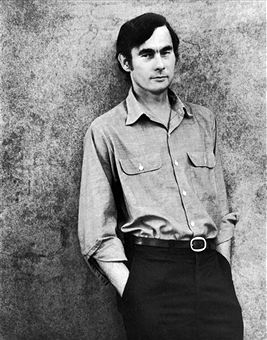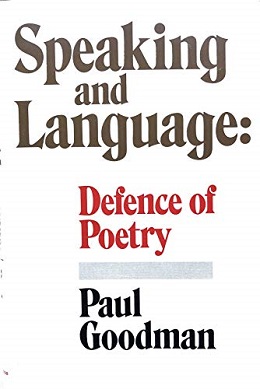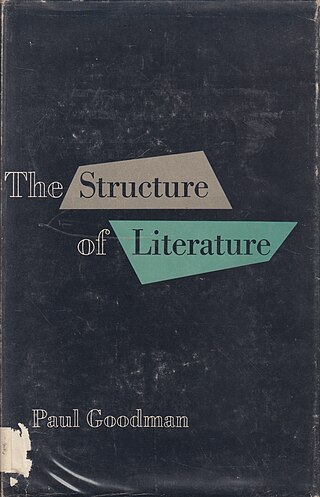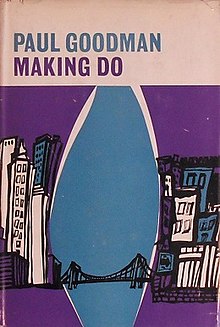
Tropic of Cancer is an autobiographical novel by Henry Miller that is best known as "notorious for its candid sexuality", with the resulting social controversy considered responsible for the "free speech that we now take for granted in literature." It was first published in 1934 by the Obelisk Press in Paris, France, but this edition was banned in the United States. Its publication in 1961 in the United States by Grove Press led to obscenity trials that tested American laws on pornography in the early 1960s. In 1964, the U.S. Supreme Court declared the book non-obscene. It is regarded as an important work of 20th-century literature.

Theodore Roszak was an American academic and novelist who concluded his academic career as Professor Emeritus of history at California State University, East Bay. He is best known for his 1969 text The Making of a Counter Culture.

Growing Up Absurd is a 1960 book by Paul Goodman on the relationship between American juvenile delinquency and societal opportunities to fulfill natural needs. Contrary to the then-popular view that juvenile delinquents should be led to respect societal norms, Goodman argued that young American men were justified in their disaffection because their society lacked the preconditions for growing up, such as meaningful work, honorable community, sexual freedom, and spiritual sustenance.

The Empire City is a 1959 epic novel by Paul Goodman.

Communitas: Means of Livelihood and Ways of Life is a 1947 book on community and city planning by Percival and Paul Goodman. Presented as an illustrated primer on how city planning affects socioeconomic order and citizens' empowerment to better their communities, the book reviews historical and modern approaches to urban planning before proposing three of the Goodmans' own provocative community paradigms.

Kafka's Prayer is a 1947 book-length analysis of the novelist Franz Kafka and his works by Paul Goodman. Using Freudian and Reichian psychoanalysis, Goodman assesses the philosophical and religious significance of Kafka's aphoristic statements and three novels. He levels an anarchist societal critique against social institutions borne from neuroticism. Goodman used the book, published by Vanguard Press, to grapple with the religious implications of psychoanalysis and transition from a career writing on Jewish concerns to a period that would culminate in his collaboration on the founding work of the gestalt therapy movement.

The May Pamphlet is a collection of six anarchist essays written and published by Paul Goodman in 1945. Goodman discusses the problems of living in a society that represses individual instinct through coercion. He suggests that individuals resist such conditions by reclaiming their natural instincts and initiative, and by "drawing the line", an ideological delineation beyond which an individual should refuse to conform or cooperate with social convention. While themes from The May Pamphlet—decentralization, peace, social psychology, youth liberation—would recur throughout his works, Goodman's later social criticism focused on practical applications rather than theoretical concerns.

This is a list of works by Paul Goodman (1911–1972), including his nonfiction, novels, short stories, poetry, and plays.

Speaking and Language: Defence of Poetry is a book of criticism by Paul Goodman that blames academic, structured approaches to linguistics for diminishing the role of creativity and spontaneity in speaking and human nature.

Little Prayers and Finite Experience is a book of prose and poetry by Paul Goodman.

Collected Poems is a book of Paul Goodman's collected poetry, edited by his literary executor Taylor Stoehr and introduced by George Dennison.

The Structure of Literature is a 1954 book of literary criticism by Paul Goodman, the published version of his doctoral dissertation in the humanities. The book proposes a mode of formal literary analysis that digests a literary work into structural elements based on the reader's experience and recombines those parts to explain the work as a whole. Goodman analyzes several literary works as examples with close reading and genre discussion.

Paul Goodman described himself as a man of letters but foremost a poet. He published several poetry collections in his life, including The Lordly Hudson (1962), Hawkweed (1967), North Percy (1968), and Homespun of Oatmeal Gray (1970). His Collected Poems (1973) were published posthumously.
Paul Goodman's oeuvre spanned fiction, poetry, drama, social criticism, psychoanalytic theory, and literary analysis. While he viewed himself as a man of letters, he prized his stories and poems above his other work. To Goodman, writing was "his vice" or "way of being in the world".
Taylor Stoehr (1931–2013) was an American professor and author. He edited several volumes of Paul Goodman's work as his literary executor.

The Lordly Hudson is a poem and 1962 book of collected poetry by Paul Goodman.
Parents' Day is a 1951 novel by Paul Goodman. Written as autobiographical fiction based on the author's experiences teaching at the upstate New York progressive boarding school Manumit during the 1943–1944 year, the book's narrator grapples with his homosexuality and explores a series of sexual attractions and relationships that culminates in his being fired by the school. Goodman wrote the novel as part of a Reichian self-analysis begun in 1946 to better understand his own life. He struggled to find a publisher and ultimately self-published through a friend's small press. Reviewers remarked on unease in Goodman's sexual revelations, lack of self-awareness, and lack of coherence in the text. Parents' Day sold poorly and has been largely forgotten, save for some recognition as an early gay American novel.
Prior to his career in social criticism, the American writer Paul Goodman had a prolific career in avant-garde literature, including some 18 works for the stage. His plays, mostly written in the 1940s, were typically experimental. Their professional productions were either unsuccessful or flopped, including the three productions staged with The Living Theatre in the 1950s and one with The American Place Theatre in 1966. His lack of recognition as a litterateur in the 1950s helped drive him to his successful career in social criticism in the 1960s.

Paul Goodman was an American writer and public intellectual best known for his 1960s works of social criticism. Goodman was prolific across numerous literary genres and non-fiction topics, including the arts, civil rights, decentralization, democracy, education, media, politics, psychology, technology, urban planning, and war. As a humanist and self-styled man of letters, his works often addressed a common theme of the individual citizen's duties in the larger society, and the responsibility to exercise autonomy, act creatively, and realize one's own human nature.

The Society I Live in Is Mine is a 1963 book of Paul Goodman's social commentary ephemera. In letters to the editor, essays, speeches, reviews, and other clippings, Goodman addresses the general public on a range of civic problems, both to influence their thinking and to model the type of alert and intervening citizen he believes is necessary for societal change. His proposals span from urban renewal to school administration, with a particular focus on education and youth, and reflect his community anarchist position in wanting to spur individual initiative, oppose supreme power, and experiment with social alternatives.














